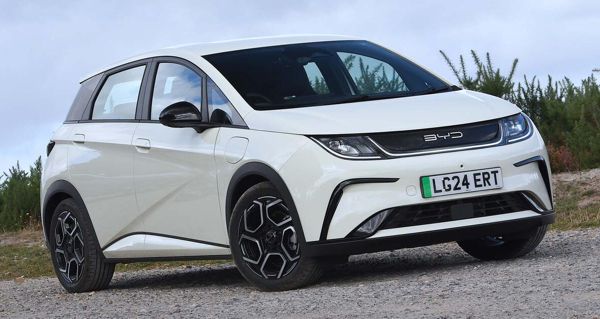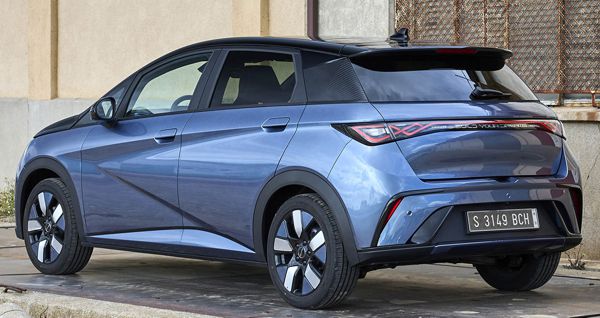Published
on 18
Jul 2025
|
All rights reserved.
|
|

|
|
BYD
sells a C-segment EV at B-segment prices.
|
|
A couple of years ago
Chinese car makers started invading Europe with their cheap yet well
engineered electric cars. SAIC (through MG and Maxus brands), Geely
(through Zeekr, Lynk & Co, Polestar and Lotus), Chery (through
Jaecoo and Omoda), Great Wall (Ora), Xpeng…. all have increasing
footprints in European market. However, the most fearsome of which
might be BYD. Over the past 20 years, the “Build Your Dream” company
has grown from a copycat of Toyota Corolla and Honda Accord to become
the country’s largest car manufacturer, leapfrogging SAIC and other
giants. It is now one of the top 10 giants globally with 4.3 million
cars sold last year, and is certain to rise further thanks to a
staggering growth rate of 40 percent.
A large part of its success is down to its early investment in electric
cars. Its F3DM was the world’s first plug-in hybrid, and e6 was the
country’s earliest electric car for mass production. BYD group itself
is also a battery maker, originally supplying electronics industry. By
designing and supplying batteries to its own car division, it enjoys a
strong advantage in costs and technology.
However, like the entire automotive industry in China, BYD’s ambitious
expansion plan faces the problem of overcapacity when China’s economy
gets into trouble. Cooling demands means car makers need to slash
prices to boost sales. As BYD has an advantage in scale and costs
structure over its rivals, it is also the keenest to launch price war,
kickstarting a throat-cutting competition to the extent you cannot
imagine – now an entry-level EV can be purchased for as little as
US$8000 in China ! As price war in the domestic market eats heavily
into its profit margin, BYD tries to boost export to compensate. In the
next few years, we shall see the company launching more and more cars
in Europe and elsewhere, if not the tariff-fended United States.
The BYD Dolphin is not exactly a new car. It went on sale in China
since 2021, but a major facelift and improvement made in 2023 allows it
to be exported to Europe. This car was designed under Wolfgang Egger,
the highly respected German designer who previously served as the
design chief of Alfa Romeo, Seat and Audi before joining BYD in 2016,
no wonder it looks thoroughly modern. Size-wise, it is a C-segment car,
having a footprint more or less the same as a Volkswagen Golf. However,
owing to the cost advantage, it is priced like the B-segment small EVs
in Europe.

|
|
The
cabin has a strong smell of plastics, recalling my memory of riding the
early air-conditioned taxis in my childhood.
|
|
The Dolphin employs conventional 5-door hatchback layout with a
front-mounted electric motor driving the front wheels. The battery sits
under the cabin floor and between axles. All versions employ BYD’s own
“Blade” LFP (Lithium Iron Phosphate) battery, in which cells are shaped
like blades and inserted vertically into the battery pack casing,
optimizing cooling and preheat. LFP has lower energy density than the
more popular NMC batteries, but it is a lot cheaper to build and a bit
safer in accidents. It is part of the reason why the Dolphin can
undercut comparable rivals by a large margin.
There are 4 models on offer: entry-level one is called “Active”,
employing a 44.9kWh battery for a WLTP range of 211 miles (count it
160-170 in real world). A 95hp motor offers modest performance of 93
mph and 0-60 in over 11 seconds, but it is cheap at £26,200 in
the UK market even though that includes a sizable profit margin of
which the domestic market BYDs would be jealous. The only real let down
is a slow DC charging rate of 65kW, which means a charge from 10-80
percent takes 38 minutes while most rivals can accomplish within 30
minutes.
Next up is “Boost” model, priced at £27,200. The extra grand gets
you a multi-link suspension upgrade from the base car's torsion-beam
setup, plus a more powerful, 177hp motor, boosting top speed by 6 mph
and 0-60 to a warm-hatch-matching 7.1 seconds. Unfortunately, the
battery and charge performance remain the same as Active, while range
drops to 195 miles (let’s say 150 in real world).
At the top of the tree are Comfort and Design models. They differ by
just cosmetic and equipment. Both get a 60.4kWh battery to stretch WLTP
range to 265 miles or just over 200 miles practically, while a 204 hp
motor improves 0-60 further to 6.6 seconds. Mind you, it does not feel
a lot quicker than Boost in the real world, so you have to be sure you
need the extra range before spending £30,200 or £31,700 on
them, especially when the charger is still underwhelming at 88kW,
taking 40 minutes to charge from 10-80%.
Looking around, you will find many rivals travel longer and charge
faster, such as Volkswagen ID.3 / Cupra Born, Renault Megane and Kia
EV3, but the Chinese-built EV is significantly cheaper. Only its
stablemate MG 4 can match its prices while offering a slight edge in
range and charging speed. Conversely, cars like Renault 5, Hyundai
Inster, Fiat Grand Panda electric and Citroen e-C3 are just as cheap,
but they are considerably smaller.
 |
|
Spacious,
practical and cheap without inspiration or fun.
|
|
In the cabin, the Dolphin can accommodate a quartet of six-footers with
head and knee room to spare. It is practical, too, thanks to lots of
storage cubbies and large door bins. The boot is quite large at 345
liters, accompanied with an adjustable parcel shelf.
The dashboard design tries hard to be stylish, although it is not up to
everyone’s taste. Predictably, cost is saved by using cheap hard
plastics in most places, although some touch points are wrapped with
leatherette. Fit and finish is okay, but a strong plastic smell
throughout the cabin ruins the atmosphere, recalling my memory of
riding the early air-conditioned taxis in my childhood. The
infotainment system is dominated by a large, 12.8-inch touchscreen
which is rotatable by motor. Response is quick enough, while the user
interface is not as badly designed as some other Chinese products – at
least the controls for climate and audio are displayed permanently at
the bottom of main screen. However, it is still much harder to use than
those offered by Renault, Kia and Mini, for example.
On the move, the Active model is predictably slow, suitable only to
inner city commute. Boost is much brisker. Both throttle and brake
pedals are well calibrated to be smooth and linear, easy to drive in
daily driving. Wind and motor noises are well suppressed. However, be
more enthusiastic on throttle could induce sudden wheel spin at the
front axle, as the cheap Linglong rubbers and traction control struggle
to contain the rush of torque. Likewise, in normal driving you may
appreciate the suppleness provided by the soft suspension setting, but
up the pace on a B-road and the chassis becomes unsettled by bumps
while the ride becomes floaty. The BYD doesn’t like to be pushed
through corners. Should you do so, you will find the steering too light
and numb, delivering little information from the driving wheels. The
body rolls quite a lot even though the center of gravity is supposed to
be low. The tires give up gripping at relatively low limits, and the
nose washes wide. If it were tuned by European engineers like MG 4, I
suppose it could have been much better.
Use it as a daily car as most people do, the BYD Dolphin is easy to
live with. No, it won’t match the latest rivals in range and charging
or information system or integration of driver assistance systems, as
it is not exactly new. Its biggest assets are accommodation,
practicality and, most of all, value for money. However, if you see a
car more than an appliance and demand more in terms of inspiration and
fun, it is not your cup of tea.
|
Verdict:   |
|